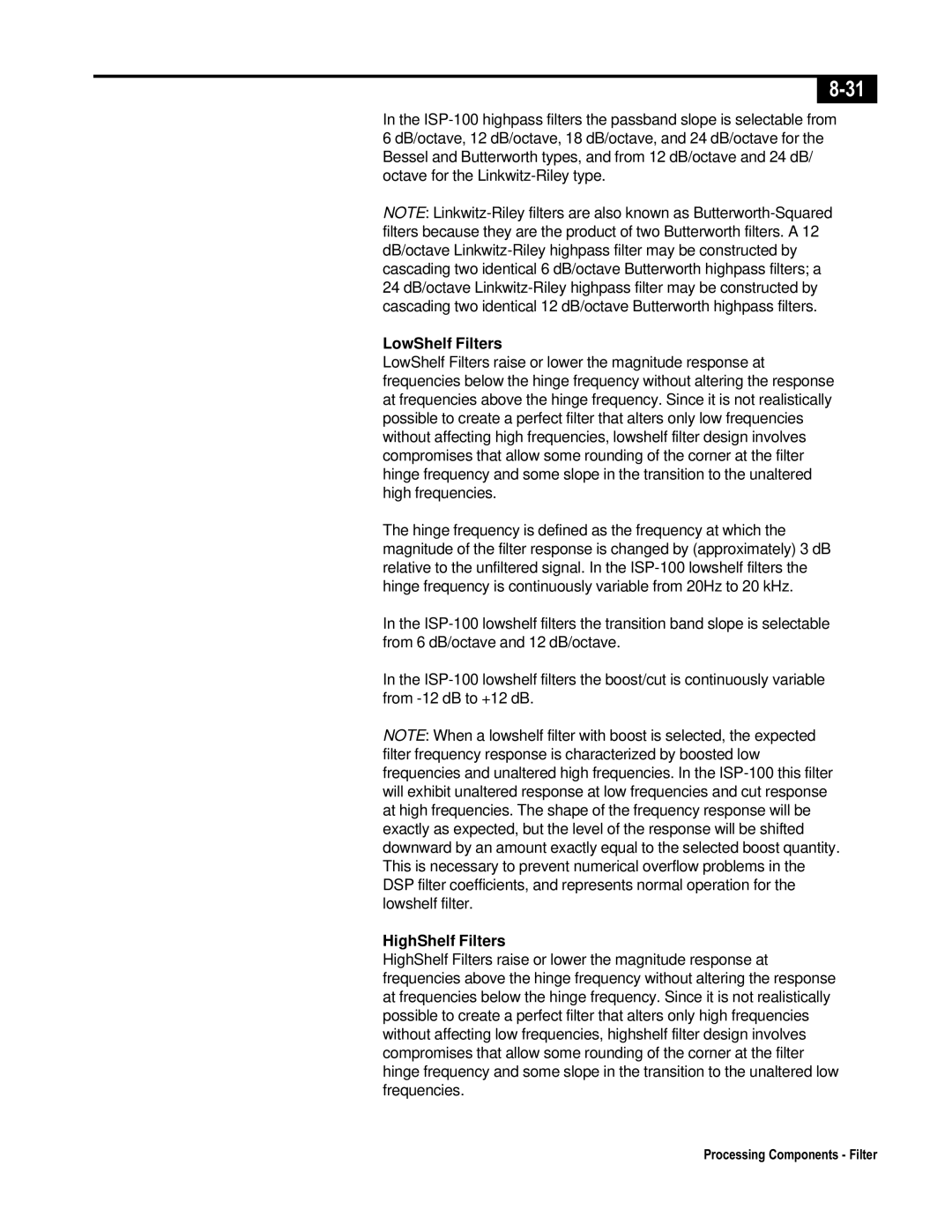In the
NOTE:
LowShelf Filters
LowShelf Filters raise or lower the magnitude response at frequencies below the hinge frequency without altering the response at frequencies above the hinge frequency. Since it is not realistically possible to create a perfect filter that alters only low frequencies without affecting high frequencies, lowshelf filter design involves compromises that allow some rounding of the corner at the filter hinge frequency and some slope in the transition to the unaltered high frequencies.
The hinge frequency is defined as the frequency at which the magnitude of the filter response is changed by (approximately) 3 dB relative to the unfiltered signal. In the
In the
In the
NOTE: When a lowshelf filter with boost is selected, the expected filter frequency response is characterized by boosted low frequencies and unaltered high frequencies. In the
HighShelf Filters
HighShelf Filters raise or lower the magnitude response at frequencies above the hinge frequency without altering the response at frequencies below the hinge frequency. Since it is not realistically possible to create a perfect filter that alters only high frequencies without affecting low frequencies, highshelf filter design involves compromises that allow some rounding of the corner at the filter hinge frequency and some slope in the transition to the unaltered low frequencies.
Processing Components - Filter
